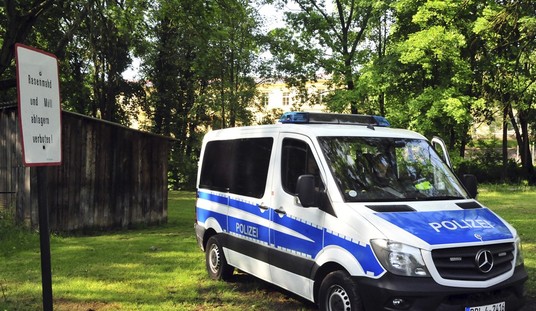First “flurona,” now this. At the very moment it seemed like Omicron would produce an “exit wave” from the pandemic, the Frankenstein combo variants are here to terrify us anew.
Except … no, they aren’t. For starters, “flurona” isn’t a thing, or at least not the thing implied by its name. It’s not a mutant viral strain of coronavirus and influenza forging together in the wild to form some sort of super-virus Voltron. It’s slang to describe patients who’ve had the misfortune to contract COVID and the flu at the same time, with each virus present in their bodies. It’s apparently biologically impossible for the flu virus and the coronavirus to combine into a single pathogen, in fact.
“Deltacron” is theoretically possible, with the Omicron variant mutating into a form that’s as virulent as Delta is or Delta mutating into a form that’s as immune-evasive as Omicron is. Scientists in Cyprus claim that it’s already happened, with 25 separate cases identified there. It’s unclear for now whether Deltacron would out-compete either Delta or Omicron in the wild but the prospect of a newer, more dangerous version of Omicron blazing across the world is horrifying.
Is it true, though?
Most scientists say no. It’s challenging for a layman like me to describe their reasoning since it’s based on highly technical quirks of virology and genomic sequencing, both of which are light years above my pay grade. But I’m going to do my best based on the explanations going around that are aimed at lay audiences. Point one: When viruses mutate in a meaningful way, the mutations show up in clusters in particular parts of the virus, not as random little changes shot through the genome. A new strain is a distinct lineage of the strain it arose from. “Deltacron” has a random pattern.
Great example. H/T: @Alexis_Verger
Left: Recombination with variants, the sequences are found in a cluster. 🔴 https://t.co/6itQ1hJ81Y
Right: “Deltacron.” With contamination, the distribution is found everywhere. 🔴 https://t.co/6itQ1hJ81Y pic.twitter.com/dWsLEDtMfn
— Chise 🧬🧫🦠💉 (@sailorrooscout) January 9, 2022
Point two: It just so happens that the spots within the Delta genome where there appears to be recombination of the two viruses are notorious for being misread by laboratory testing machines.
Because amplicon 72 of Delta is very poorly picked up, any contamination, even at miniscule levels, will get preferentially amplified (because PCR is an exponential process) and you end up with hybrid sequences.
— Tom Peacock (@PeacockFlu) January 9, 2022
As @PeacockFlu mentioned, below details how the Delta sequences are NOT MONOPHYLETIC. Same Omicron fragment in multiple different Delta backbones. So you have to believe this #Deltacron recomb happened dozens of times just Cypus, just last few days. Nope.https://t.co/epsRMRaTgD
— Brian Wasik (@BrianRWasik) January 9, 2022
The theory: “Deltacron” is just an illusion caused by contaminated samples, not a case of two different strains combining. There may have been some trace amounts of Omicron on samples in Cyprus that included much larger amounts of Delta. The lab machinery causes the virus on a sample to replicate in order to make the genome easier to read, which ultimately made the trace amount of Omicron detectable. And because the machine has difficulty reading particular places on the Delta genome, it ended up reading the Omicron genome in those places instead. It’s a lab error, not a Frankenstein strain. More from the Independent:
[O]ne particular fragment of Delta is prone to “dropping out” during the sequencing process and “sensitive to contamination”. In the case of the 25 ‘Deltacon’ samples, it appears this particular gap had been filled by a Omicron fragment, Prof Katzourakis said.
“This is a telltale sign of laboratory contamination giving the impression of recombination.”
Dr Barrett said the mutations of Deltacron that appeared to have derived from Omicron were located “precisely and exclusively” in the Delta genome fragment that is “affected by a technological artefact in certain sequencing procedures”.
Game over, right?
Not yet. The scientist in Cyprus who first detected Deltacron says everyone’s wrong. The samples were run in different labs and they’re all showing the same thing.
Deltacron infection is higher among patients hospitalized for Covid-19 than among non-hospitalized patients, so that rules out the contamination hypothesis, said [Leonidos] Kostrikis, a professor of biological sciences at the University of Cyprus and head of the Lsbortory of Biotechnology and Molecular Virology.
What’s more, the samples were processed in multiple sequencing procedures in more than one country. And at least one sequence from Israel deposited in a global database exhibits genetic characteristics of deltacron, he said.
Kostrikis believes evolutionary pressure is causing Delta to mutate into something more Omicron-like, not that the two strains are recombining in the wild. If that’s true then we might see Deltacron arise independently in various spots around the world, with its apparent presence in Israel circumstantial evidence of Kostrikis’s theory. Some of his critics are unimpressed with that explanation, though. If it’s true that lab machines routinely have difficulty reading the same part of the Delta genome where Omicron’s genome appears in the Deltacron samples, would processing the samples in different countries prove anything? And how much can we infer about the supposed virulence of this alleged new strain from a sample of just 25 people?
The head of Cyprus’s health minister said yesterday that the new variant isn’t of concern. (For now, at least.) Until we see more Deltacron in the wild, the safe assumption is that it’s a “scariant,” not a variant.








Join the conversation as a VIP Member